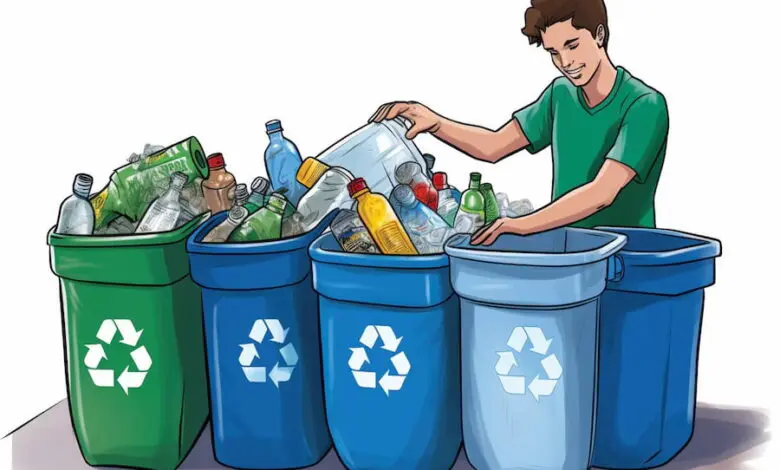How Much Waste Does the Average Person Produce Each Year?

Waste Material – The typical individual produces slightly more than four kilograms of trash each day and around 1.5 tonnes of solid material annually, according to data gathered from the Environmental Protection Agency. Although more landfills are being built, their capacity is being exceeded. Since China has banned foreign rubbish, individuals should consider what small steps they may take to lessen the increasing trash problem. hire mini Skip for your home and society for a better life and better and cleaner surroundings.
To What Extent Do We Discard?
It is crucial to examine the amount of garbage that is thrown away to gain a better understanding of waste and the issues it raises. Waste comes in a variety of forms, and some of the biggest offenders are as follows:
- Electronic gadgets
- Dangerous substances
- Threw away food
- Polymer
- Sheets and cardboard
- Clothes
- Metal
- Wood
There’s only one place this rubbish will end up if it’s not managed properly: a landfill. Waste continues to accumulate at an alarming rate for a variety of reasons, including population increase, the ongoing need for disposable goods, and the short shelf life of nearly everything from trainers to cell phones.
Management of Municipal Solid Waste: 1960–2018
From 4.5 pounds per individual per day in 2017 to 4.9 pounds per person every day in 2018, the amount of MSW generated per capita increased. The inclusion of additional methods by the EPA for managing wasted food is primarily responsible for a rise from 2017 to 2018. See Food: Material-Specific Information.
With 23. Percentage distribution by-product: Each of the following represented only 1 per cent of the overall generation, yet the paper and paperboard products were the single largest component of the materials examined in the study, constituting 34 per cent of the MSW. Thus, the production of paper and paperboard commodities reduced from 87 million pultruded between 2000 and 2018. Seven million tonnes to sixty-seven. 4 million tonnes. Ever since the year 2000, there has been a decline in the production of newspapers and the current trend is expected to persist, though due to increasing news in the digital form partly due to small page sizes as well.
Material-Specific Waste Generation
Waste From Plastic And Packaging
Numerous single-use plastics and packaging materials are used in your daily life. These materials, which range from wrapping foams to plastic bottles, greatly increase the waste stream. In reality, according to EPA data, plastics accounted for 35.7 million tonnes, or 12.2 per cent, of the total amount of MSW generated in the United Kingdom in 2018.
- Typical Items: Cups, bottles, and packing films
- Recycling Rate: Depends on the type of material and nearby facilities
Because of their strength and resistance to deterioration, plastics and packaging components present a big obstacle to waste disposal and recycling initiatives.
Organic Waste And Compostable
The other kind of waste that falls under this group is organic waste inclusive of food scraps together with other biodegradable products such as some paper products. You need to be surprised to recognize the fact that a good pot of your garbage is made up of organic matter; for instance, biodegradables are often made of food residues and yard wastes.
Compostable: Rubbish in the Garden and Left Over Foods
The benefits of composting; it helps to reduce the amount of waste that is chucked into landfills and is a good nutrient media for the soil.
By composting these waste materials you can reduce emissions of methane gas from the landfill In addition, your soil will benefit from the nutrients provided by the compost. Knowing how to adopt this type of thinking can contribute to ensuring that you reduce the impact that you have on the environment by a large margin.
Durable Goods And Paper Products
Ultimately, a substantial portion of the garbage generated also consists of paper goods including books, newspapers, and corrugated packaging. While these are frequently reusable, the sheer volume created can be astonishing. According to the EPA’s review, the total amount of MSW generated in 2018 was approximately 292.4 million tonnes, of which approximately 23.05 per cent consisted of paper and paperboard.
- Paper Goods: Books, journals, and newspapers
- Durables: furniture and appliances (but less often disposed of)
- Recycle paper products wherever you can to save forests, lower greenhouse gas emissions, and conserve energy.
Final Words
You may contribute to lessening the increasing trash problem by cutting back on usage and forming strong recycling habits. With the aforementioned advice and knowledge, you should have no trouble getting started. Visit Forbesnest for more informative blogs.

